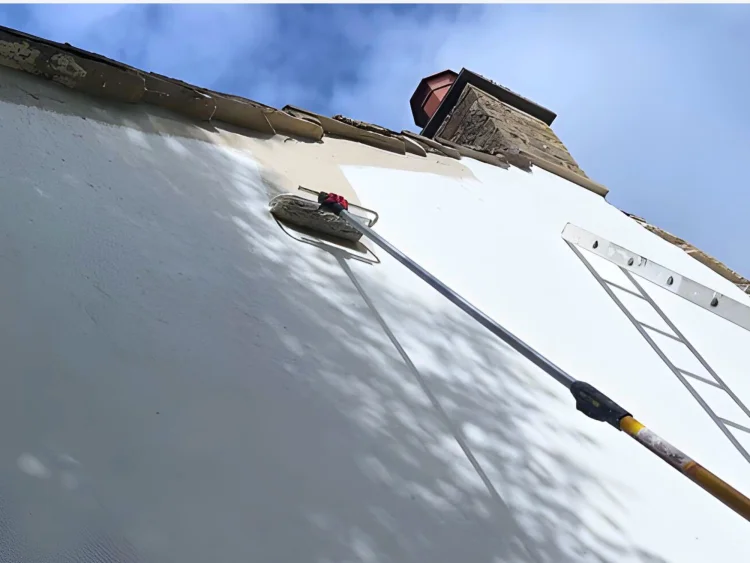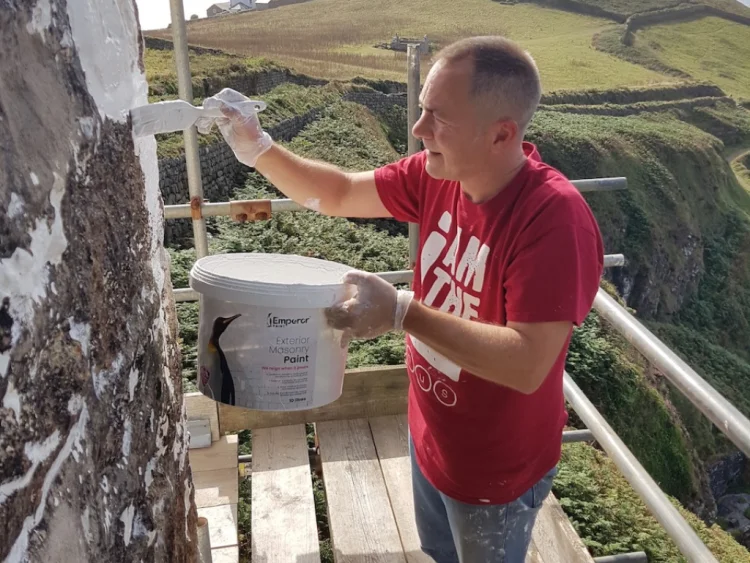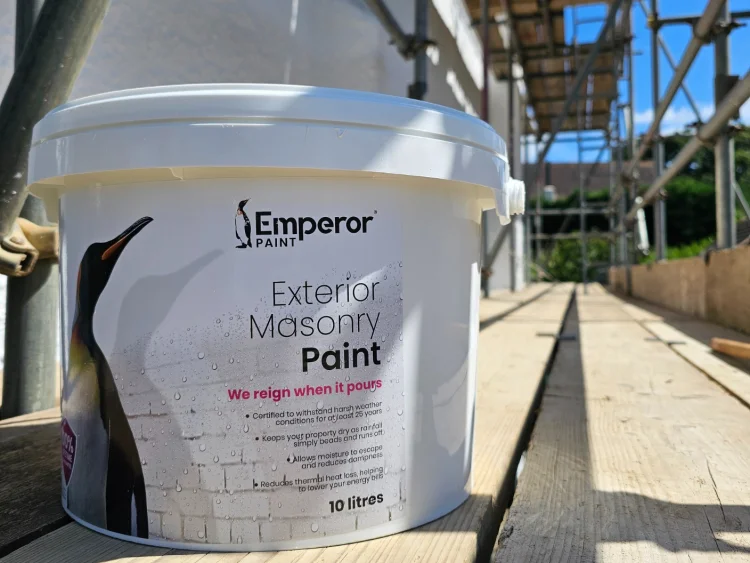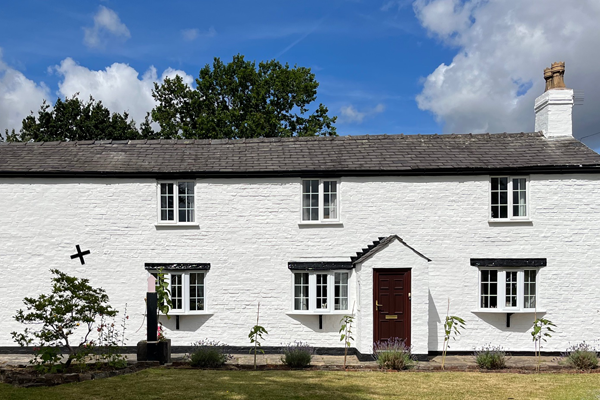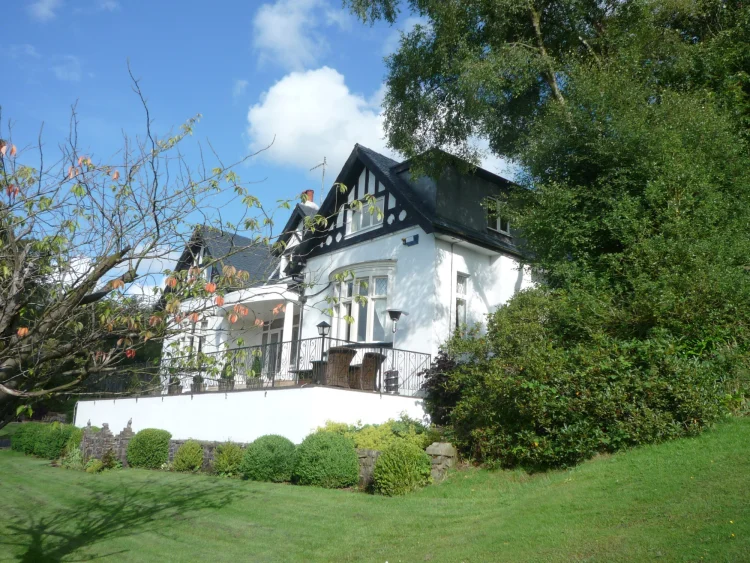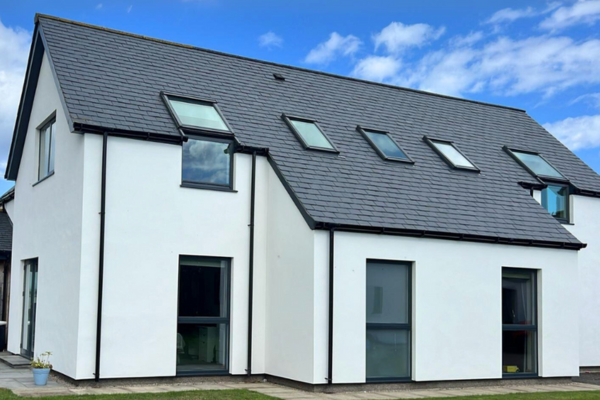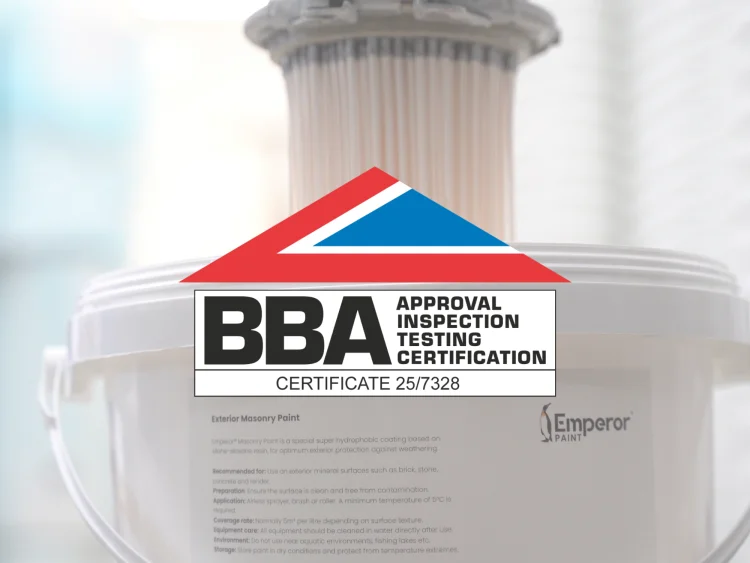Is Masonry Paint Breathable? Debunking The Myths
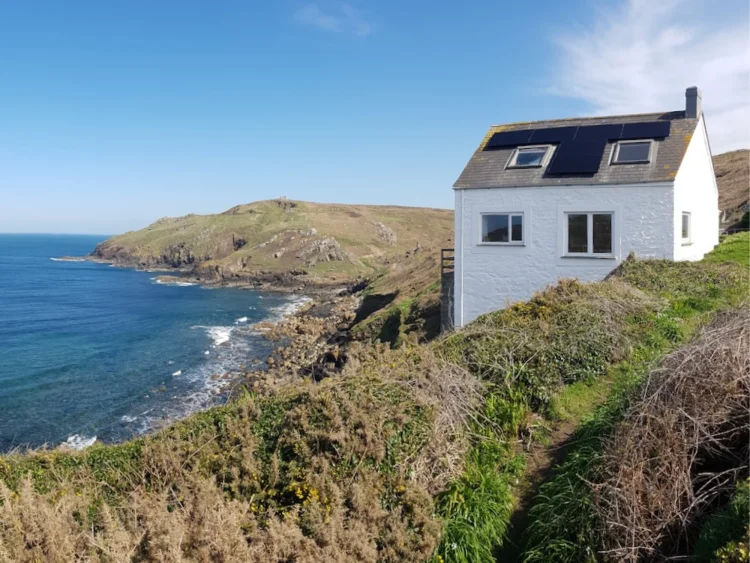
Breathability is a term you will commonly see when researching what masonry paint to use for your project, but often information can leave you with more questions than answers.
In this guide, our team of experts will explain what breathability means, whether masonry paint is breathable and answer some of the other most common questions we are asked by homeowners looking to ensure their home can naturally breathe.
What is breathability?
Breathability refers to a material’s capacity to allow water vapour to pass through its surface. In the case of exterior walls, the higher the breathability, the easier water vapour can escape the material and the drier your walls will be.
In terms of exterior walls this is crucial, as it prevents moisture from being trapped in your home.
The reason your home needs to breathe is that all buildings gather moisture over time. This is most commonly caused by rain absorbing into exterior walls in a process called water ingress or from condensation building up through our daily lives, such as drying clothes, cooking or showers. If the exterior walls of your home can’t release this moisture naturally, a whole host of problems can be caused, such as:
- Structural damage such as cracks
- Damp patches
- Heat loss
- Peeling paint
- Mould and other organic growth
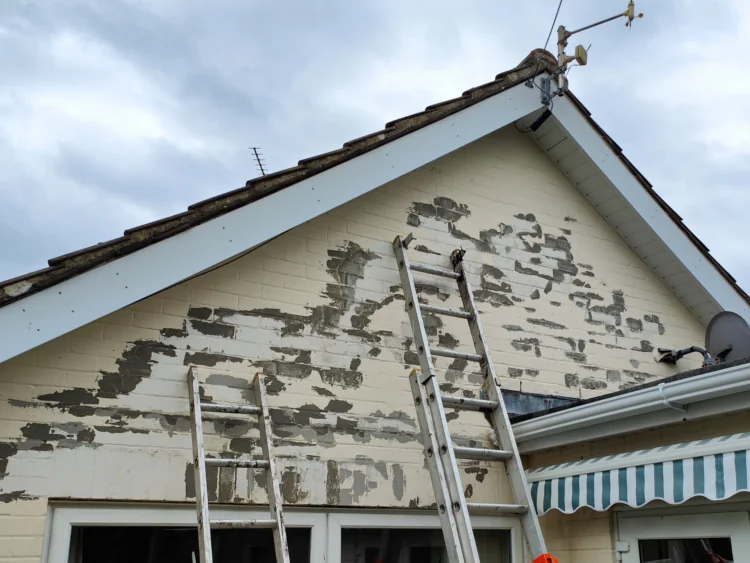
Courtesy of Richard Furness
What masonry paint is breathable?
Often identifying if a masonry paint is breathable can be tricky, particularly if you are a DIY’er taking on a project for the first time.
Most masonry paints refer to breathability in some way, shape or form, but there can be a range of terminology used.
The reality is, the term ‘breathable’ can apply to any product that allows some level of water vapour to escape. Even a product that has very poor breathability can be labelled ‘breathable’ if it allows even a small amount of water vapour to pass through the surface.
Generally speaking, most masonry paints on the market in the UK today are standard masonry paints. These are usually acrylic based with formulations containing plastic. Due to this, they generally have poor breathability particularly in comparison to more advanced paints. While standard masonry paints may sometimes be labelled breathable or microporous, they are not highly breathable and often not breathable enough for long-term performance.
This does not mean that all masonry paints are not breathable. Masonry paint is breathable if it is designed with this objective from the outset.
For thousands of years limewash has been used across the UK. It soaks into the surface of the wall rather than sitting on top of it, leaving the wall to freely breathe. Limewash isn’t designed to prevent moisture from entering the wall and can weather away, often requiring annual reapplication.
There have also been developments in masonry paint technology to create formulations that don’t impact the breathability of exterior walls while providing added durability. Silicone and silicate-based masonry paints have an open-pore structure, meaning they don’t seal the pores of masonry when applied.
Courtesy of Lucy Gaskell
Can you measure breathability?
The good news is that breathability can be measured. The bad news is that often these breathability results aren’t widely available or openly disclosed.
Breathability can be measured using an SD value, which identifies how quickly water vapour passes through a material. The lower the SD value, the higher the breathability and the better the paint is for your home. Generally speaking, an SD value of below 0.5 is considered breathable by British Standards.
Limewash has an SD value of 0.01, while our silicone-based Emperor Masonry Paint has an SD value of 0.03, making both highly breathable and having no negative impact on the breathability of the surface.
Can breathable masonry paint be waterproof?
While breathability is key to releasing moisture, preventing it in the first place is equally as important.
When it comes to masonry paint, one of its most important tasks is to prevent water from rainfall entering the external wall of your home. By preventing this water ingress, it helps keep the wall dry, protected and free from many of the damaging effects moisture can have on your home.
When it comes to preventing water entering a wall, there is equally as much confusion. Masonry paints are labelled as ‘weatherproof’, ‘weather resistant’ or ‘waterproof’ to name a few, but what do these mean?
Much in the same way as some marketing jargon is used for breathability, these terms don’t have any measurement attached to them. All paint reduces water absorption to some level, but to be highly effective is another thing.
A commonly held myth when it comes to masonry paint is that it can’t be both highly breathable and highly water resistant. This isn’t true however, as the nano-technology in our Emperor Masonry Paint manages to achieve both.
This nano-technology under a microscope is comprised of millions of pyramids that are invisible to the naked eye. When a bead of water hits these pyramids it cannot attach to the surface, causing it to simply roll away. Imagine trying to balance a ball on the tip of a pyramid – the ball rolls off instantly. That’s exactly what happens when a bead of rainwater hits our nano-technology.
Within this web of pyramids is an open-pore structure. When these pores align with the pores that are present on the exterior walls of your home, the pathways for water vapour to naturally pass through the substrate are preserved and the walls can breathe.
Due to raindrops being between 1.8 million and 21 million times larger than water vapour molecules, a paint can be highly water resistant and highly breathable by ensuring the vastly larger water droplets are too big to pass through, while the much smaller water vapour molecules can.
In contrast to this, many standard masonry paints do uptake moisture over time. When this moisture soaks underneath the paint film, the low breathability leads to it becoming trapped, causing it to gather within the wall.
To conclude: Is masonry paint breathable?
We hope this has helped debunk some of the common myths you may see about breathability.
To answer the question ‘Is masonry paint breathable’ – Yes, masonry paint is breathable, if you use the right paint.
When looking for the right masonry paint for you, our team of experts recommend:
- Always looking for independent testing – Impartial third-party testing results are key to establishing the true performance of a paint. Some of the highest levels of independent product evaluation include the BBA Agrément Certificate and results from UKAS accredited testing facilities.
- Give the manufacturer a call – We always recommend giving the manufacturer of the paint you are using a call and ask them a few questions not only about the product’s performance but how best to apply it. This ensures you’re getting clear, accurate information for your project.
Want to get in touch with our team of experts? Feel free to have a chat with the team by emailing [email protected] or calling 01254 936121.


